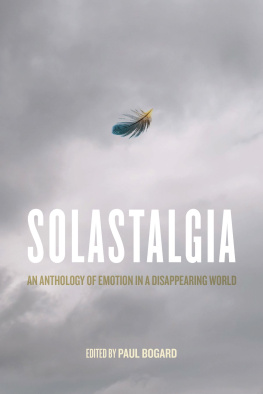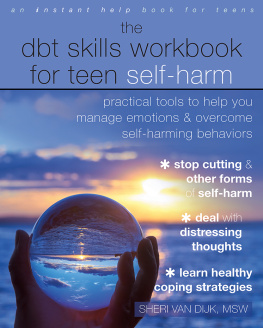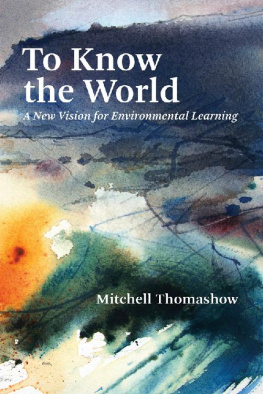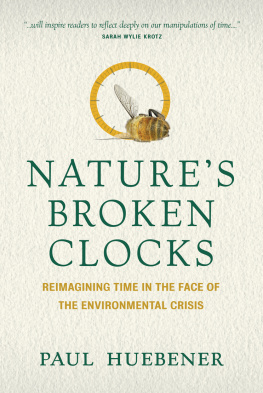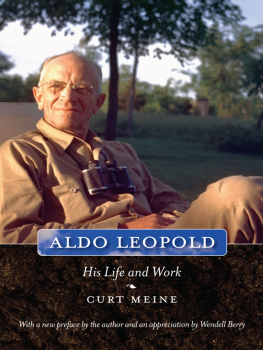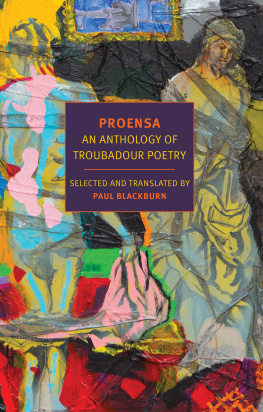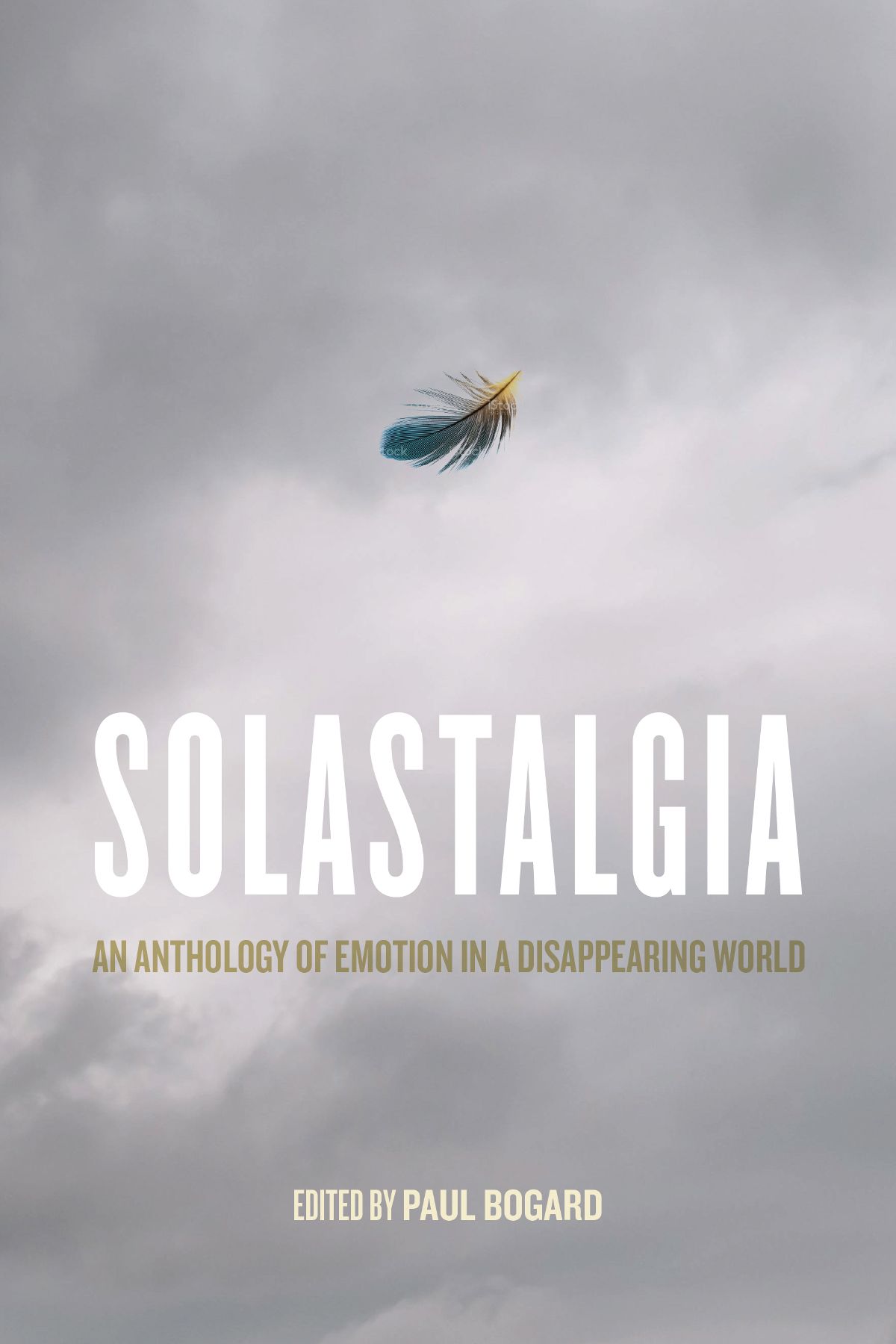

SOLASTALGIA
SOLASTALGIA

An Anthology of Emotion in a Disappearing World
Edited by Paul Bogard
University of Virginia Press
Charlottesville and London
University of Virginia Press
2023 by the Rector and Visitors of the University of Virginia
Fireflies 2023 Scott Sanders; A Shared Lament 2023 Meera Subramanian
All rights reserved
Printed in the United States of America on acid-free paper
First published 2023
9 8 7 6 5 4 3 2 1
Library of Congress Cataloging-in-Publication Data
Names: Bogard, Paul, editor.
Title: Solastalgia : an anthology of emotion in a disappearing world / edited by Paul Bogard.
Description: Charlottesville : University of Virginia Press, 2023.
Identifiers: LCCN 2022036008 (print) | LCCN 2022036009 (ebook) | ISBN 9780813948843 (paperback) | ISBN 9780813948850 (ebook)
Subjects: LCSH: Solastalgia. | Global environmental changePsychological aspects. | Climatic changesPsychological aspects. | Environmental psychology. | Grief. | Loss (Psychology)
Classification: LCC BF353.5.S65 S6 2023 (print) | LCC BF353.5.S65 (ebook) | DDC 155.9dc23/eng/20221006
LC record available at https://lccn.loc.gov/2022036008
LC ebook record available at https://lccn.loc.gov/2022036009
Cover art: Background, patternpictures.com; feather, Boonchuay_Promjiam/istock.com
For Amalie, that you know we loved this world
One of the penalties of an ecological education is that one lives alone in a world of wounds. Much of the damage inflicted on land is quite invisible to laymen. An ecologist must either harden his shell and make believe that the consequences of science are none of his business, or he must be the doctor who sees the marks of death in a community that believes itself well and does not want to be told otherwise.
Aldo Leopold, A Sand County Almanac (1949)
None of those emotions really get to the heart of what I truly feel. None of them are big enough. If Im honest with myself, what I truly feel is... love. Hear me out. I dont mean any simple, sappy kind of love. I dont mean anything cute or tame. I mean living, breathing, heart-beating love. Wild love. This love is not a noun, she is an action verb. She can shoot stars into the sky. She can spark a movement. She can sustain a revolution.
Mary Annase Heglar, But the Greatest of These Is Love (2019)
Contents
Laura Erin England
Kathryn Nuernberger
Kathryn Miles
Suzanne Roberts
Joan Naviyuk Kane
Meera Subramanian
Lauren K. Alleyne
Roopali Phadke
Cynthia Belmont
Angela Pelster
Nickole Brown
Sean Hill
Holly Haworth
Kathleen Dean Moore
J. Drew Lanham
Genevieve Guenther
Ken Hada
Susan Clayton
Priscilla Solis Ybarra
Ben Goldfarb
Douglas Haynes
Leah Naomi Green
Jennifer Westerman
Erica Cavanagh
Priya Shukla
Marco Wilkinson
Paul Bogard
Janisse Ray
Jennifer Atkinson
Elena Passarello
Taylor Brorby
Sarah Jaquette Ray
Alison Hawthorne Deming
Scott Russell Sanders
I think I was around six years old when I was first accused of moping. My family had just returned from a weeks holiday at Manjimup, the home of my maternal grandparents. Manjimup is a timber town located about three hours drive southwest of Perth, the capital city of Western Australia. Manjimup gets its name from an Indigenous word for a meeting place and a place of water and bullrushes. For me, it was a place where you can meet birdfriends.
Immediately on our return home I would find a place of solace somewhere in my house or garden and visibly mope. My mother noticed it and gently scolded me for being so aloof and rooted to the same spot. I would maintain this ridiculous moping for at least a few days and of course there was an element of theatrical drama attached to it. I was punishing my parents for removing me from Manjimup. I wanted them to know where I felt at my happiest and just how unhappy I was at no longer being there.
The reason for that happiness revolved around my core biographical and formative elements: the influence of my grandparents, the fecundity of their farm, and the richness of nature that was woven into and surrounding it. My grandmother introduced me to the life of birds, grandfather to the world of wood, the farm to self-sufficiency and the surrounding environment as a place of nature-wonder and addictive immersion.
The farm and its surrounding forest and bushland were full of wildlife. Quite apart from the trees, among the tallest flowering plants in the world, there was the huge diversity of animal and insect life. Australia is famous for its brightly colored parrots and cockatoos, and this sector of Western Australia had more than its fair share.
Small birds such as wrens and finches also caught the eye while motorbike frogs sat on top of every fence post that provided shelter under the rosemary hedge farm garden perimeter. However, it was mainly the proximity to birds that created a life-long calling for me.
It was one bird in particular that caught my attention. The grey fantail (Rhipidura albiscapa), although not colorful and rather smallish, is an aerial acrobat as it catches insects on the wing. It fans its tail and spreads its wings in an attempt to intimidate the insects in close proximity to fly into its trap of a beak.
It is a fearless flycatcher as it will come very close to humans and swoop around the body. It is also known to land on peoples heads in nesting season to take strands of hair directly from the scalp. Despite gaudy parrots and other beautiful bush birds, it was this species that was to become my bird totem.
As a boy, I thought that the intimacy this bird shared with me was special and that no one else had such close encounters with it. I would chatter to it in bird language, and we would commune as if I had my own personal Peter Pan or Fairy Queen as my bush-walking companion. The grey fantail personally invited me into the world of birds.
Not all of my bird experiences at Manjimup were as communal as my contact with the fantail. A mixture of the intensely life-affirming and the inevitable life-destroying (watching a goshawk take out a western rosella parrot in the farm orchard) was enough to give even a child a glimpse into what I would later call the psychoterratic, or Earth-psyche relationships. There was a spectrum of emotions ranging from the sublime to the terrifying that could envelop my childhood experiences of nature.
The melancholia I experienced at my return to suburban Perth must have been the first manifestation of those aspects of my personality, built around the positive and negative dimensions of nature and immersion in the processes of life. I was able to distinguish positively reinforcing Earth emotions from negative ones at a very early age.
That sensitivity (if it can be called that) stayed with me for the rest of my life. The grey fantail can be found in many parts of Australia and it is common in eastern Australia where I have resided for the last forty years. As an adult amateur bird person, I found out that the childhood close encounters with this magic bird were simply it using me as an extension of its fan, sweeping and disturbing the ground so that it could catch flies. Despite that revelation, it remained my special bird totem.
Next page
